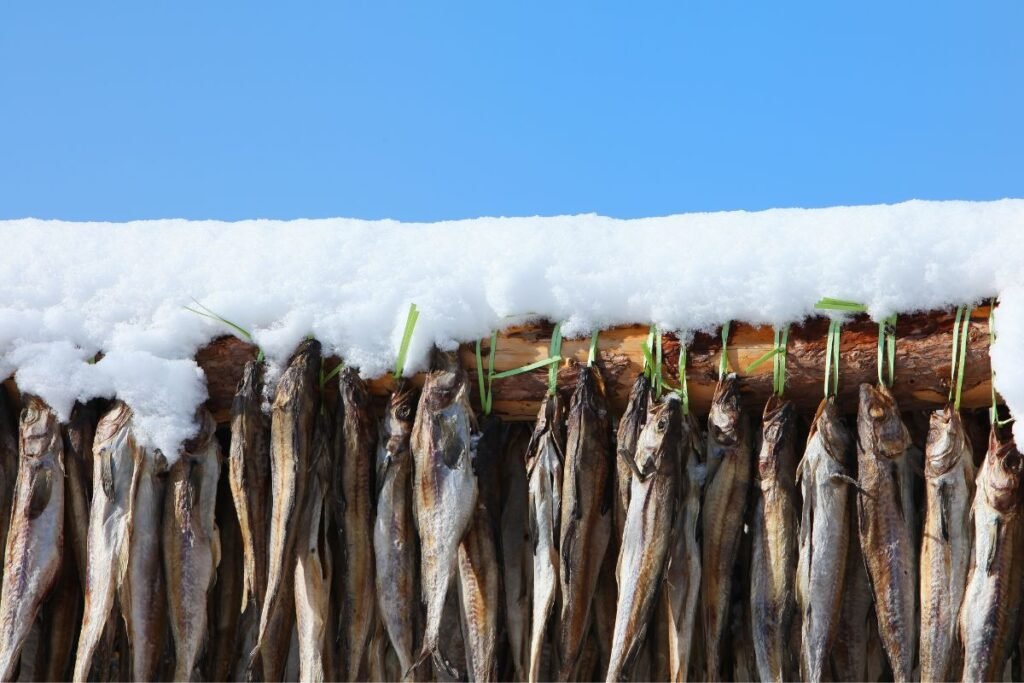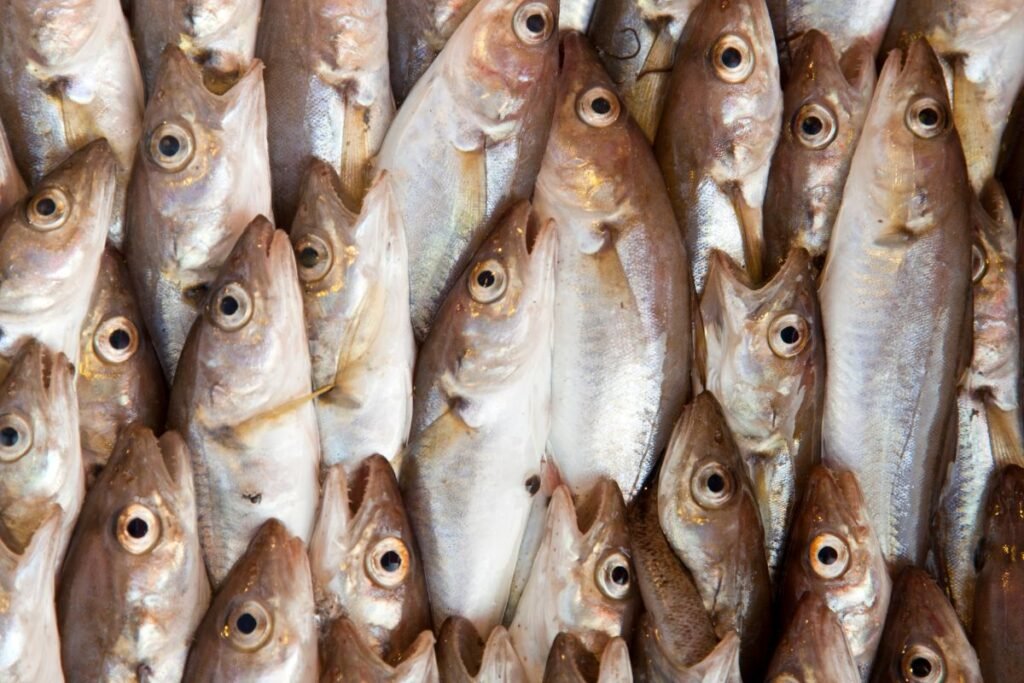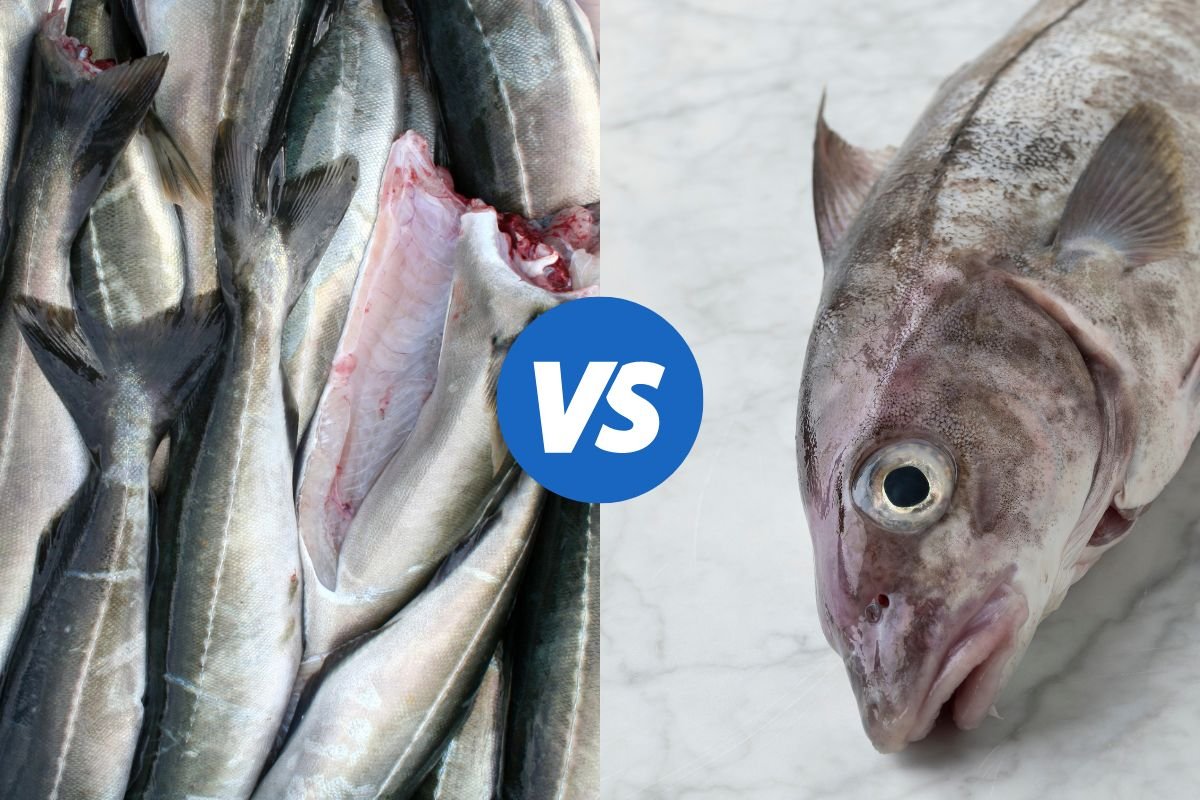When it comes to fish, I like my fish flavor a little more on the mild side. That’s why I like one of these better than the other! Keep reading to find out which!
What’s the Difference Between Pollock and Haddock?
Pollock and haddock are two common white, flaky fish found in grocery stores and on restaurant menus. They share some similarities but have distinct differences when it comes to their taste, texture, and best uses. This comprehensive guide will compare the two fish species and help you determine when to choose pollock vs haddock.
Where Do Pollock and Haddock Come From?
Both pollock and haddock are members of the cod family, harvested from the northern waters of the Atlantic Ocean.
Pollock is more abundant and is fished from the northwest Atlantic coasts, from New England up through Canada. The main pollock fisheries are in the Gulf of Maine and Georges Bank, where they are typically caught in mid-water trawler nets. Other key pollock fishing grounds include the coasts of Massachusetts, New Brunswick, and Nova Scotia.
Haddock is found and fished on both sides of the Atlantic but is more concentrated in the northeast Atlantic near Iceland, Norway, and the British Isles. In the US, the premium true Atlantic haddock comes from offshore grounds on Georges Bank and the waters off the New England coast. The best haddock fisheries are located north and east of Cape Cod.

What Do Pollock and Haddock Look Like?
Pollock and haddock can be differentiated by their coloring and markings.
Pollock is a lighter-colored fish with an olive green or light brown back that fades to a silver belly. It has a faint soft lateral line and a small barbel on its chin.
Haddock is dark grey or black on its back with a very distinctive and obvious dark black lateral line running along its sides. Haddock also has a distinctive black spot on each side of the body near the gills.
Both pollock and haddock have a forked tail and three dorsal fins, though the size and shape differs slightly. On average, pollock tends to be a bit larger than haddock. Pollock commonly reaches 2-3 feet long and can weigh anywhere from 3 to 30 pounds. Haddock are typically under 2 feet long and weigh an average of 2-10 pounds.
How Does the Taste Compare?
Haddock is considered to have a sweeter, cleaner seafood flavor compared to pollock. It has a flakier, smoother texture and moistness due to its slightly higher fat content.
Pollock is a drier fish with a mildly fishy flavor and coarser grain in the flesh. It holds its shape very well when cooked and has very large, thick flakes compared to haddock.
While both pollock and haddock are mild white fish, haddock is the clear winner when it comes to superior natural seafood flavor. It has a fresh sweetness and buttery flavor that pollock lacks.
However, pollock and haddock fillets can lend themselves to different cooking methods and preparations. And both absorb sauces and spices nicely, letting the flavors they are cooked with shine.
What’s the Nutritional Difference Between Pollock and Haddock?
Haddock contains slightly more calories and fat per 3-ounce serving compared to pollock. A cooked 3-ounce portion of pollock has around 70 calories and 1 gram of total fat, while the same portion of haddock has about 80 calories and 1.5 grams of fat.
However, both pollock and haddock are considered excellent low-calorie, low-fat sources of lean protein. A 3-ounce serving of pollock supplies about 17 grams of protein, while haddock provides 16 grams in the same portion size.
When it comes to vitamins and minerals, pollock and haddock have fairly comparable nutritional value. They are both low in mercury and high in nutrients like Vitamin B12, niacin, selenium, and phosphorus. Haddock contains just a bit more of the beneficial omega-3 fatty acids EPA and DHA.
| Nutrient | Pollock (3 oz cooked) | Haddock (3 oz cooked) |
|---|---|---|
| Calories | 70 | 80 |
| Fat | 1g | 1.5g |
| Protein | 17g | 16g |
| Sodium | 75mg | 60mg |
| Omega-3s | 0.4g | 0.5g |
| Vitamin B12 | 2mcg | 3mcg |
| Selenium | 47mcg | 44mcg |
How to Cook Pollock vs. Haddock
The optimal cooking methods tend to differ between pollock and haddock fillets due to their unique textures.
Haddock is ideal for more delicate cooking styles like baking, broiling, sautéing, steaming, and poaching. These gentle, moist-heat methods allow the sweet, flaky character of haddock to shine. It pairs beautifully with buttery breadcrumbs, herbs, and lemon.
Pollock holds up better to heartier cooking preparations. Its firm, chunky flesh makes it perfect for soups, stews, chowders, fish tacos, sandwiches, and fried fish dishes. Pollock will stay intact when simmered in soups or chowders or fried up fish and chips style.
In general, opt for haddock when you want a super mild, tender fillet, and choose pollock when you need fish with more substance. But both can be used successfully in many seafood recipes including ceviche, baked fish fillets, and seafood casseroles.

Popularity, Availability, and Sustainability
Haddock is the harder to find and more expensive of the two fish. It achieved its popularity due to its sweeter flavor, tender texture, and lack of “fishiness.”
Pollock is cheaper to buy and often more readily available at the fish counter. It was once mainly used for processing into fish sticks and fish fillet products. But pollock has risen in popularity as a versatile, budget-friendly fish option.
Fortunately, both the pollock and haddock fisheries are considered sustainable and well-managed overall. Atlantic pollock has received a Marine Stewardship Council certification, meaning the fishery meets standards for environmental best practices. Most haddock fisheries are closely monitored and regulated via quotas to prevent overfishing.
Common Substitutions and How to Differentiate Fillet
At the store or fish counter, pollock and haddock fillets can often be substituted for one another in recipes, especially when skinned and cut into chunks. Just note the flavor and texture will not be identical.
Other white fish like cod, halibut, sole, or tilapia can potentially stand in for haddock or pollock as well. But they each have their own distinct qualities.
When purchasing whole fish or fillets, look for these identifiers:
- Haddock is always labeled as just that. Young haddock may be called “scrod” but it commands a higher price.
- Pollock is sometimes mislabeled as Boston bluefish or pollack. Surimi seafood products are made from Alaskan pollock.
- Fillets are difficult to tell apart unless you can spot haddock’s signature black spot. For whole fish, the dark lateral line clearly identifies haddock.
Want to read more about fish? Check out Bluegill Vs Perch
The Bottom Line
Haddock takes the prize for its sweet, delicately flaky flesh and quintessential white fish flavor. It excels when baked, broiled or poached.
But the more widely available pollock holds up great in hearty or spicy dishes and can provide the same flaky fish texture at a lower cost.
Now that you understand their differences in taste, texture, cooking uses and appearance, you can decide whether it’s worth splurging on haddock vs when budget-friendly pollock is the right choice for your seafood meal.
You may have realized, that haddock is my fish of choice, between these two! Comment below to tell us which one you prefer, and why!



